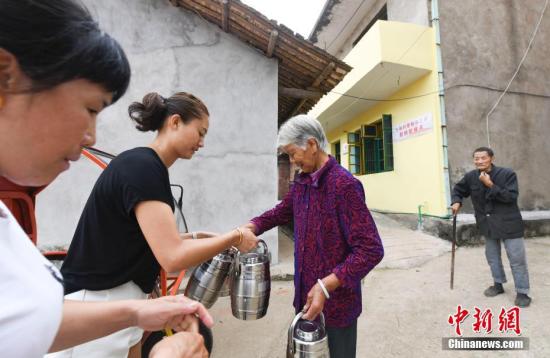缺乏体育锻炼是一个全球性问题
Full Text
Physical activity has been more important than ever during the covid-19 pandemic. Insufficient physical activity is a global health problem and has itself been called a pandemic.1Lockdowns have reduced time spent on physical activity and increased sedentary time,23both of which are associated with risks to health.
World Health Organization guidance (updated in 2020) recommends a minimum of 150-300 minutes of moderate intensity physical activity or 75-150 minutes of vigorous intensity physical activity weekly, and encourages people to exceed these targets.45Healthcare professionals have an important role in helping people to make any necessary changes to their behaviour.6
The linked systematic review and meta-analysis of randomised trials by Kettle and colleagues (doi:10.1136/bmj-2021-068465) provides evidence of the effectiveness of physical activity interventions delivered or prompted by health professionals in primary care.7
The authors reviewed 51 trials evaluating ‘predominantly aerobic based physical activity’ interventions delivered to adults. Participants in trial intervention groups increased moderate to vigorous intensity physical activity (MVPA) by a modest 14 min/week on average relative to controls. But this weighted mean could obscure substantial variation between individuals. These participants were also more likely than controls to meet guideline targets for MVPA. Interventions involving five or more contacts with health professionals, longer follow-up, or those delivered by primary care and other professionals were associated with greater improvements.7
Many gaps remain in the literature, however, and Kettle and colleagues’ findings reflect this uncertainty.8Trials measuring physical activity with objective devices, such as accelerometers or wearable activity trackers, found no significant difference in MVPA between groups, while trials relying on self-reported activity showed an increase of 24 min/week in intervention groups.7In a previous meta-analysis, Larsen and colleagues found that interventions using physical activity monitors increased MVPA by 48.5 min/week.9But they judged this evidence to be ‘low certainty’ due to publication and small study biases.
The 14 minute improvement reported by Kettle and colleagues might be an underestimate because some control group participants received brief advice on physical activity, itself a recognised intervention.8This advice could have increased physical activity levels among controls, reducing the difference between control and intervention groups.
Broad range of benefits
The benefits of physical activity are broad and include better mental health, a lower risk of cardiovascular disease, improved sleep, and a lower risk of some cancers.10Benefits are dose dependent and nonlinear, with no lower threshold. The biggest benefits occur when moving from no activity to some activity; even small changes are clinically significant.451112Increasing duration of physical activity of any intensity, and less time spent sitting, is associated with a reduced risk of premature mortality.13
Evidence from the H1N1 influenza epidemic suggests that regular physical activity is associated in a dose dependent manner with reduced incidence, duration, and severity of acute upper respiratory infections.14Evidence is emerging that physical activity could even improve immune response to covid-19 vaccines.1516
Time spent sitting (sedentary time) is an independent risk factor for all cause mortality, cardiovascular disease, cancer, and type 2 diabetes.4Kettle and colleagues reported no significant effect of primary care interventions on sedentary time, while Larsen and colleagues found that physical activity monitor based interventions were associated with a mean decrease of 9.9 min/day.79
The benefits of physical activity were already clear,4and this new meta-analysis shows that interventions delivered by health professionals can increase physical activity levels among primary care patients.7According to a third recent meta-analysis,17the number needed to treat for primary care promotion to increase one inactive adult’s physical activity to internationally recommended levels is 12. This figure compares favourably with a number needed to treat of 20 for nicotine replacement therapy for smoking cessation.18
The interventions most powerfully associated with improvements are not yet clear, but guidelines such as those from the National Institute for Health and Care Excellence or other simple frameworks819take a pragmatic approach and can be a useful tool in conversations with patients. But there is room for digital innovation: people using streaming and subscription services, apps, online platforms, and recorded or live activity classes are more likely to meet guideline targets for physical activity.20Tailored solutions are also likely to be more effective; home based exercise can improve physical activity levels in older adults, for example.21
Primary care is an essential partner in global efforts to increase physical activity to levels recommended by WHO, and we now have evidence to support primary care interventions. Future research should focus on identifying the most effective interventions, optimising outcomes for all population groups, and evaluating how best to decrease sedentary time as well as increasing physical activity.
全文翻译(仅供参考)
在 covid-19 大流行期间,身体活动比以往任何时候都更加重要。身体活动不足是一个全球性的健康问题,本身就被称为大流行病。1封锁减少了花在体育活动上的时间,增加了久坐时间,23这两者都与健康风险有关。
世界卫生组织指南(2020 年更新)建议每周至少进行 150-300 分钟的中等强度体育锻炼或 75-150 分钟的高强度体育锻炼,并鼓励人们超过这些目标。45医疗保健专业人员在帮助人们对其行为做出任何必要改变方面发挥着重要作用。6
Kettle 及其同事(doi:10.1136/bmj-2021-068465)对随机试验进行的相关系统评价和荟萃分析提供了初级保健中卫生专业人员提供或推动的身体活动干预措施有效性的证据。7
作者回顾了 51 项评估向成人提供的“主要有氧运动”干预措施的试验。与对照组相比,试验干预组的参与者平均每周增加 14 分钟的中等强度到高强度的体力活动 (MVPA)。但这种加权平均值可能会掩盖个体之间的实质性差异。这些参与者也比对照组更有可能达到 MVPA 的指导目标。涉及与卫生专业人员接触五次或更多、随访时间更长或由初级保健和其他专业人员提供的干预与更大的改善有关。7
然而,文献中仍然存在许多空白,Kettle 及其同事的研究结果反映了这种不确定性。8使用客观设备(例如加速度计或可穿戴活动追踪器)测量身体活动的试验发现,各组之间的 MVPA 没有显着差异,而依赖自我报告活动的试验显示干预组每周增加 24 分钟。7在之前的一项荟萃分析中,Larsen 及其同事发现,使用身体活动监测器进行干预可使 MVPA 每周增加 48.5 分钟。9但由于发表和小的研究偏差,他们认为这一证据“低确定性”。
Kettle 及其同事报告的 14 分钟改善可能被低估了,因为一些对照组参与者收到了关于身体活动的简短建议,这本身就是一种公认的干预措施。8该建议可能会提高对照组之间的体力活动水平,从而减少对照组和干预组之间的差异。
广泛的好处
体育锻炼的好处是广泛的,包括更好的心理健康、降低心血管疾病的风险、改善睡眠以及降低患某些癌症的风险。10益处是剂量依赖性和非线性的,没有较低的阈值。最大的好处发生在从无活动到有活动的过程中;即使很小的变化也具有临床意义。451112增加任何强度的身体活动的持续时间,减少久坐的时间,与降低过早死亡的风险有关。13
来自 H1N1 流感流行的证据表明,规律的身体活动以剂量依赖性方式与急性上呼吸道感染的发病率、持续时间和严重程度降低相关。14越来越多的证据表明,体育锻炼甚至可以提高对 covid-19 疫苗的免疫反应。1516
久坐时间(久坐时间)是全因死亡率、心血管疾病、癌症和 2 型糖尿病的独立危险因素。4Kettle 及其同事报告说,初级保健干预对久坐时间没有显着影响,而 Larsen 及其同事发现,基于身体活动监测器的干预与平均减少 9.9 分钟/天有关。79
身体活动的好处已经很明显了,4而这项新的荟萃分析表明,卫生专业人员提供的干预措施可以提高初级保健患者的身体活动水平。7根据最近的第三项荟萃分析,17促进初级保健以将一名不运动的成年人的身体活动提高到国际推荐水平所需的治疗人数为 12。这一数字与尼古丁替代疗法所需的治疗人数 20 相比具有优势。为戒烟。18
与改善最密切相关的干预措施尚不清楚,但国家健康与护理卓越研究所或其他简单框架819等指南采取务实的方法,可以成为与患者对话的有用工具。但数字创新仍有空间:使用流媒体和订阅服务、应用程序、在线平台以及录制或直播活动课程的人更有可能达到体育活动的指导目标。20量身定制的解决方案也可能更有效;例如,家庭锻炼可以提高老年人的身体活动水平。21
初级保健是全球努力将身体活动增加到世卫组织建议水平的重要合作伙伴,我们现在有证据支持初级保健干预。未来的研究应侧重于确定最有效的干预措施,优化所有人群的结果,并评估如何最好地减少久坐时间以及增加身体活动。
THE
END


















 营业执照公示信息
营业执照公示信息